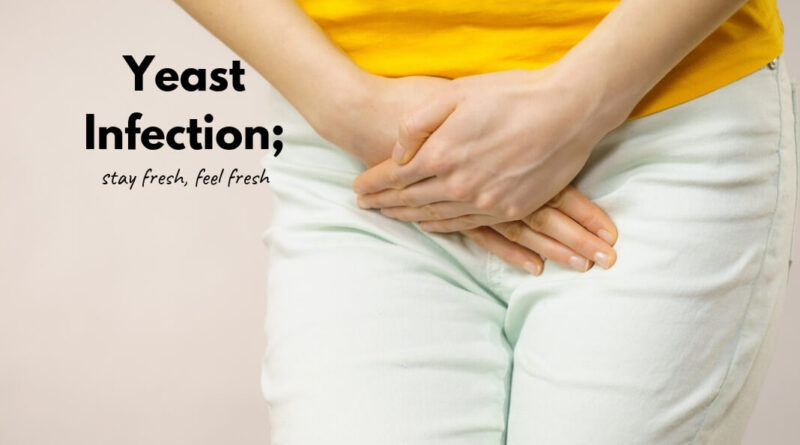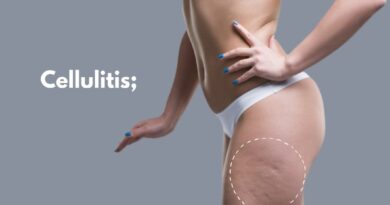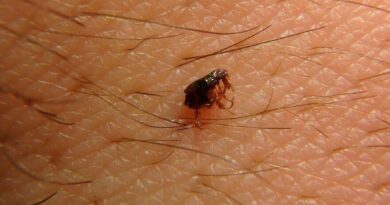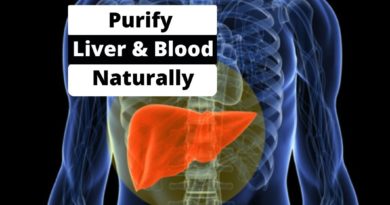How to Treat Yeast Infection with Natural Remedies
Being a woman in this age and time is already a mammoth task. To make it even harder for them, yeast infection has been contrived. Yeast infection is the elephant in women’s health room that nobody is talking about. However, it is extremely common and often easily treatable.
The Center for Disease Control in the US found that about 75% of women do suffer from yeast infection once in their lifetime. Albeit, these are harmless infections, in some cases, they tend to rear their ugly head by causing severe pain and by recurring even after treatment. It is noticed that out of 10 women, around 8 women have complained about suffering from this disease.
What causes a yeast infection? Yes, you guessed it right: Yeast! The same type of fungus that grows outdoors on trees and plants, the fungus used in bakeries is the same type that can develop inside the body and could lead to an infection.
While there may be a chance that the yeast that causes vaginal infections, as well as candida symptoms, could be completely harmless, however, at some point its levels can reach so high that it could kill the ‘good’ bacterial flora present in and around the vagina and cause a severe vaginal infection.
Yeast infection is sometimes referred to as Yeast vaginitis, Candidal vaginitis, or Candidal vulvovaginitis.
The species of yeast responsible for causing this disease is Candida albicans. Over 90% of vaginal yeast infections are caused by these species.
Candida species are even present in healthy women and they reside alongside the ‘good’ bacterial flora in the vagina. Furthermore, it is estimated that 20-50% of women already have candida present in the vagina. However, for a yeast infection to occur, there has to a loss of balance between Candida species and the bacteria present.
The most commonly known remedies for a yeast infection are antifungal creams and suppositories that are easily found at most drug stores. However, these are known to have no effect and could even fail to work. That’s when you can find solace from home remedies and alternative therapies that offer a long term solution to cure/prevent yeast infections.
Table of Contents
How to Treat Yeast Infection using Naturopathic Remedies
- Home Remedies
- Foods
- Herbs
- Essential Oils
- Supplements
- Preventive Tips
- Yeast Infection Vs UTI
CURE 1: Home Remedies
In the comfort of your house, you could treat and cure your yeast infection alongside other remedies listed above. Yeast Infection ailments may take time to manifest and you may not know that you are suffering from it until you feel the first occurrence of the symptoms. In such situations, home remedies can alleviate your pain and in the long run, may be helpful in treating your implication when used simultaneously with other remedies.
1. Apple Cider Vinegar (ACV)
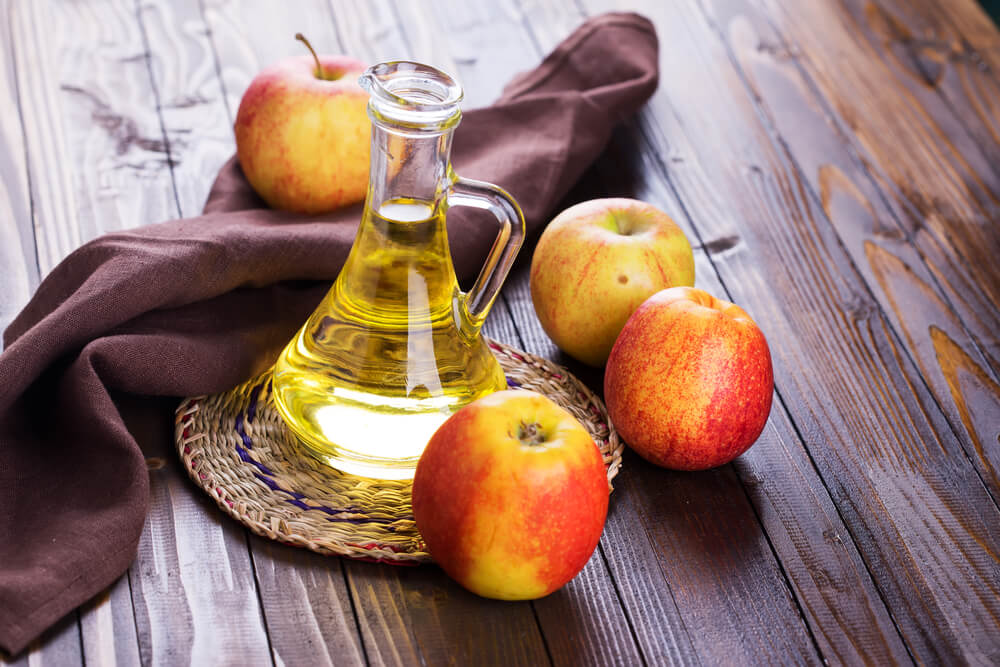
Apple cider vinegar or commonly referred to as cider vinegar is made from fermented apple juice and was primarily used in salad dressings, marinades, vinaigrettes, and food preservatives. Until recently, no one was aware of medicinal benefits that this solution houses.
Why does it work?
Apple cider vinegar contains acetic acid(1), that is a known antimicrobial, antifungal agent. It directly acts on the pathogens and dissolves the plasma membrane of the pathogens causing them to die.
A study (2) conducted in 2018 found that mildly diluted apple cider vinegar was not only able to kill, but also prevent the growth of candida. This effect was discovered in a candida culture, hence there is a requirement of clinical trials to be conducted to find the efficacy of apple cider vinegar for yeast infection.
How to use apple cider vinegar for yeast infection?
There are several ways of ingesting apple cider vinegar, however, one of the easiest is to drink it right off the cup. Take 1-2 tablespoons of apple cider vinegar and dilute it in a glass of water, add a tablespoon of honey to it, and consume it.
Alternatively, you could apple cider vinegar to your salads, to your tea or to your smoothie.
You could also apply apple cider vinegar with the combination of effective carrier oil such as organic coconut oil. A 2007 study(3) shows that adding coconut oil to Apple Cider Vinegar is as effective as prescription antifungal medications. For this, you would need to mix 1 teaspoon of ACV into 1 tablespoon of coconut oil. You could apply this mixture onto the site of the infection for the best results.
How much to use?
It is ideally suggested that you follow these remedies on a day to basis at least once for 2-3 weeks.
2. Boric Acid
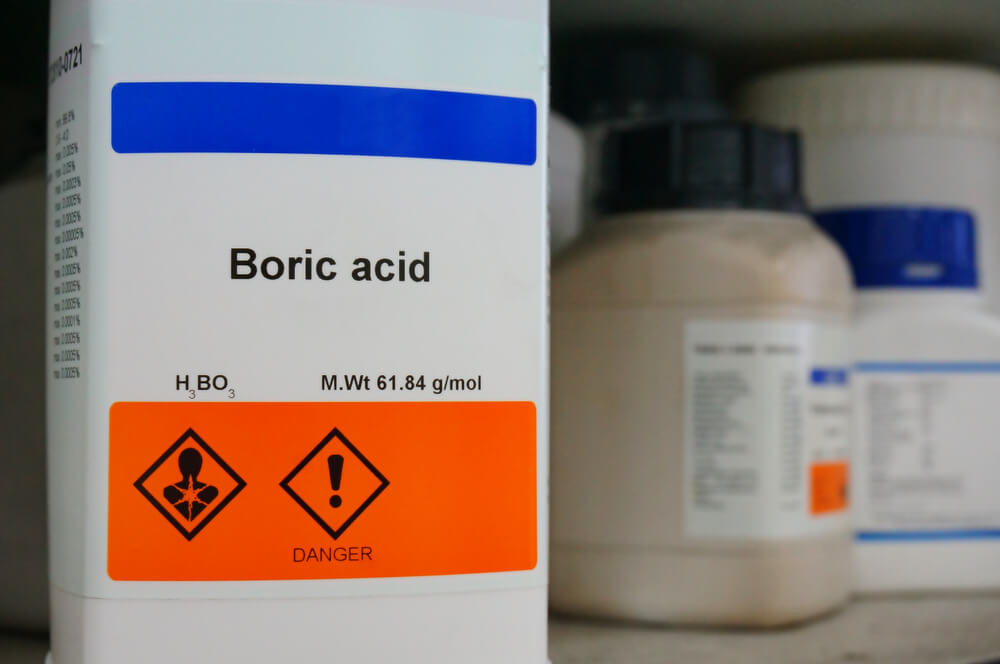
Boric acid is a white, crystalline chemical substance that has antifungal and antiviral properties. It is used in various prescription pharmaceutical products to treat fungal infections. It is one of the few counteractants that is available without a prescription.
Why does it work?
In a study published in the Journal Of Women’s Health, researchers studied several studies revolving around boric acid as a treatment for recurrent yeast infection. It was deduced that 14 studies in total had shown variable rates of boric acid’s efficacy. It ranged between 40-100 percent and none of the studies reported any side effects or recurrence of the disease.
The researchers finally came to the conclusion that boric is a safe alternative to other treatments and it is also comparatively very affordable than conventional treatment plans.
How to use boric acid for yeast infection?
Boric acid supplementation is very simple and could be followed by just using them right from the container. Although it is strictly advised that you check with your doctor/physician before you do so
How much to use?
According to the University of Michigan, it is recommended that you have 600 mg, for 2 weeks. However, before you do so it is recommended that you consult with your doctor/physician.
3. Epsom Salt
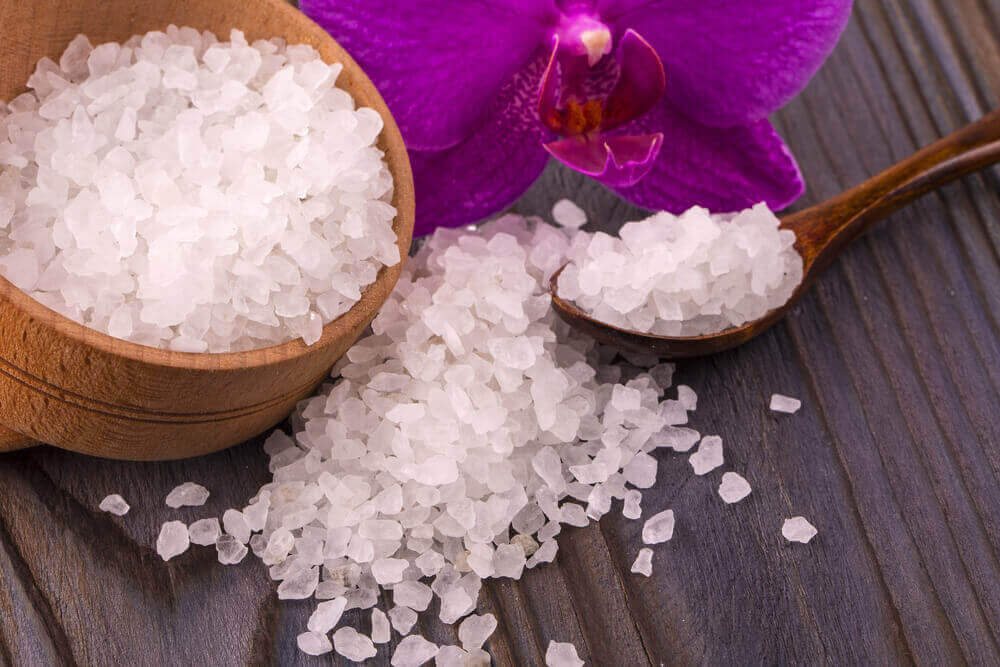
Magnesium Sulfate powder is a commonly used medicinal powder that houses several medicinal properties. It has been used to treat constipation, migraines and several other diseases. Majorly this salt is used in agriculture.
Why does it work?
Although there hasn’t been much research that was conducted on Epsom salt, however, magnesium in the Epsom salt is linked to being an analgesic and has anti-inflammatory properties that work on the yeast infection, and help in reducing the inflammation and pain
How to use epsom salt for yeast infection?
Ingredients:
- Two tbsp. of Epsom salts
- Two tbsp. of glycerin
- A gauze pad
Procedure:
- Mix the above ingredients in a bowl
- Apply the mixture onto a gauze
- Place it on the affected area
- Leave it for 15-20 minutes
Repeat every four to six hours until your pain is reduced.
How much to use?
Although there aren’t any set restrictions on the usage of Epsom salt, it is recommended that you mix it with glycerin and then use it. Also, it may not be feasible to do it every six hours, you could do it once before sleeping and after waking up for the best results.
CURE 2: Foods For Candidiasis
Foods for yeast infection, Weird isn’t it? Yes, Foods could be the answer to help you prevent/cure your yeast infection. .Food forms the main form of nutrition for you to get your minerals and vitamins that are required to boost the immune system that is required by the body to fight against the infection.
1. Garlic (Allium cepa)

This tropical herb is not only a fragrant condiment, but it also houses several medicinal benefits that could help you cure/keep several diseases at bay.
Why does it work?
Garlic is the queen jewel of alternative medicine, it has been used to treat several diseases from ages. Garlic houses allicin, that is the active chemical compound that imparts the antibacterial and antifungal properties. Garlic being an antifungal agent directly acts on the growth of Candida species and helps in inhibiting the growth, thereby helping in the prevention/cure of the yeast infection.
In a study conducted in 2002, garlic was studied as an anti-candida agent and how it reacted with the pathogen, Candida albicans. It was noticed that garlic was an efficient and potent substance that was able to reduce the growth of albicans to a large extent.
How to use garlic for yeast infection?
One of the simplest yet effective ways to use garlic for yeast infection is to add in crushed/finely chopped garlic to your meals. You could easily integrate it into your meals as it is not only a tasty spicy, but it also houses several medicinal benefits.
Additionally, you could also use the different varieties of garlic. You could use supplements, tinctures, and powder. However, before adhering to this regimen it is advised that you consult with your doctor/physician.
How much to use?
Albeit there aren’t any dietary restrictions on the dosage of garlic in your food, however, if you are swallowing it directly, it is recommended that you stick to one clove a day as more could cause digestive problems. Also, it is recommended that if you are using any commercial forms of garlic, consult with your doctor/physician to find the dosage that suits you.
2. Yogurt
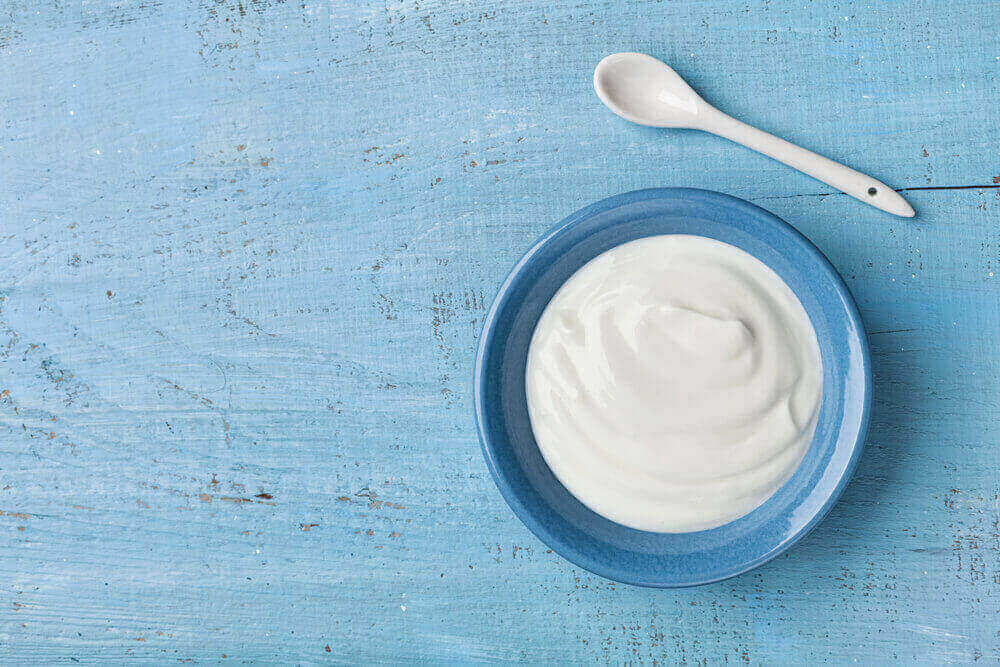
Many women have provided anecdotal success stories of using yogurt for yeast infections. Although, these have been used since ages to treat this disorder, there hasn’t been scientific research conducted on this subject until recently.
Why does it work?
Yogurt consists abundance of lactobacillus, this bacteria is known to fight against the fungal strain of candida and helps in the inhibition of the growth of candida.
There have been several studies (4) that have surfaced about the efficacy of yogurt. In one such study, it was suggested that the therapeutic effects of yogurt may be more effective than clotrimazole, an antifungal cream.
In the other study(5) in 2006 found that probiotics provide health benefits to their host and they have shown promise in preventing yeast infections.
How to use yogurt for yeast infection?
It is to be noted that only plain yogurt with no natural sweeteners must be used as the ones with sweeteners could increase the chance of spreading the infection.
There are two ways you could use yogurt for yeast infection:
Direct application: You could directly apply a scoop of yogurt on the site of infection to stop the spread of the infection.
Tampon application: You could use an unused tampon applicator and fill it with yogurt and let it stay for 2-4 hours. It is ideally recommended that you change the tampon every 6 hours.
Additionally, you could also use cool, unused yogurt and fill it in the tampon applicator for instant pain relief.
How much to use?
It is ideally recommended that you do this for 2 weeks, twice every day. It is to be noted that you insert the tampon carefully and not too deep.
3. Cranberries (Vaccinium)

Cranberries are a group of evergreen shrubs or vines in the subgenus Oxycoccus. They are primarily seen in Britain. However, they have branched out and are now available everywhere around the globe. Depending on the location, their species may change. In Britain, it is referred to as Oxycoccos and in North America, it is referred to as macrocarpon.
Why does it work?
When you are infested by a yeast infection, you basically have fungus growing in your tract. However, these fungi are bound and they adhere to the walls of the tract using certain enzymes. When one consumes cranberries it has been observed that the enzymes present in it are able to inhibit candida from adhering to the walls of the tract, thereby warding the infection away from your body.
In a study conducted by the Oxford journals, it was noticed that proanthocyanidins that were extracted from Cranberry were able to prevent the formation of Candida albicans biofilm in urine, using adherence specific mechanisms.
How to use cranberry juice for yeast infection?
This is one of the simplest and most straight forward remedies – you just need to drink the juice. However, it is to be duly noted that you should only be consuming the unsweetened variety and not a commercial product as it has added preservatives and sugars.
Ideally, it is recommended that you blend several cranberries and strain the pulp and store the juice in your refrigerator. You could sip on it whenever you’d like. Alternatively, you could also use organic, unsweetened juice for best results.
How much to use?
Although there isn’t any restriction on how much to ingest. However, it is ideally suggested that you drink about 240ml (8 ounces) of this juice on a daily basis alongside your breakfast for the best results.
CURE 3: Herbs for Yeast Infection
Herbs for yeast infection that could change the way you treat it. Herbs are naturally occurring substances which originate from plants or plant derivatives. They have shown immense potential in curing a lot of diseases effectively including UTI, kidney disorders, and yeast infections. Herbal remedies are easily accessible and don’t bear any kind of side effects.
1. Aloe Vera
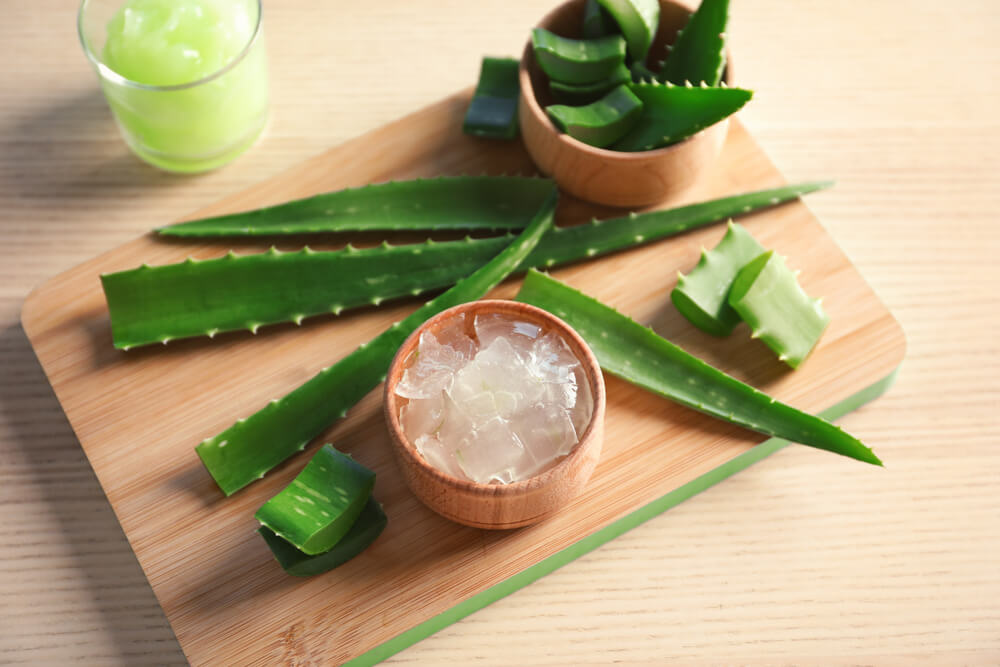
Aloe vera is a xerophyte, i.e. it is a plant species that grows wild in the hot and humid weather condition and is mainly seen in deserts and is used mainly for medicinal benefits and as a decorative plant.
It is a natural product known to promote health, beauty, and skin. It is colloquially also referred to as the ‘The plant of Immortality’ and is used today extensively in dermatology.
Why does it work?
Aloe Vera has been used since ages as it is an established antifungal, antibacterial and anti-inflammatory agent. It is known to contain lectin, a protein that has been found to stimulate the immune system of the patient and that helps in killing the pathogens. Additionally, yeast infections are notoriously known to cause itchiness and irritation on the skin.
However, aloe vera contains polysaccharides which provide a protective and soothing effect when applied to the affected area. Hence, apart from curing the infection, it is able to keep the symptoms at bay.
In a study (6)conducted in 2017, it was observed that aloe vera leaf extracts were able to isolate the candida cultures in the petri dish and was able to inoculate them in the five different concentrations.
How to use aloe vera for yeast infection?
This is one of the simplest and most straight forward remedies, you just need to apply the aloe gel on the affected area.
Ingredients:
Fresh aloe vera gel
Procedure:
- Pluck 2-3 leaves of aloe vera, and cut them open and extract the gel from the leaves. You could use a spoon to scoop it out.
- Apply this freshly extracted gel as a thin layer over the affected area.
Let it rest and dry.
How much to use?
You could perform this procedure at least twice or thrice a day for a week for instant results.
2. Olive Leaf
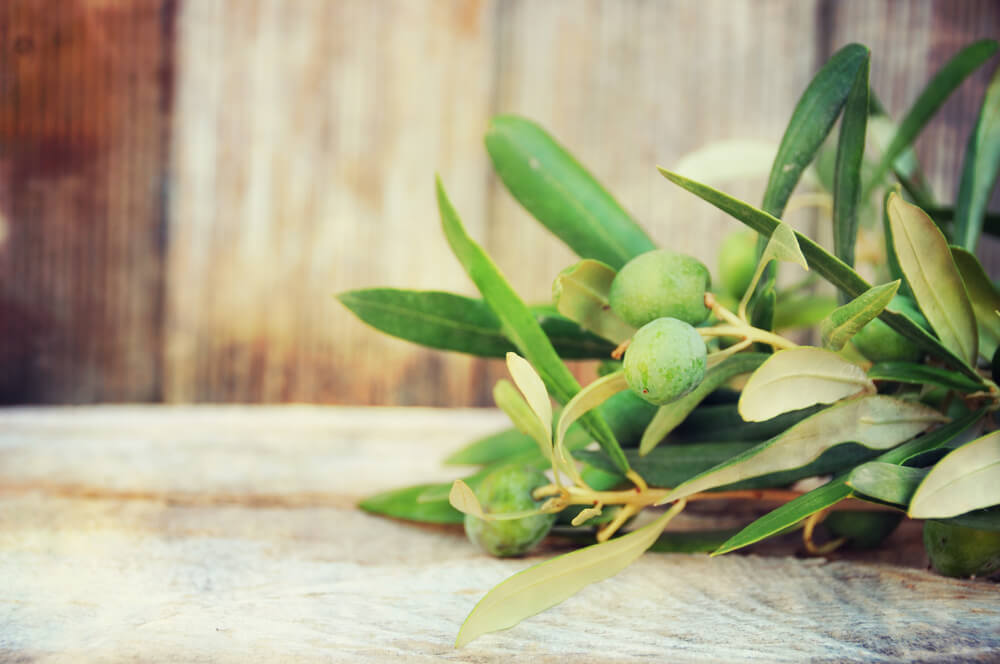
The quintessential olive has long been celebrated for its culinary uses as a food and as a healthy oil. However, the leaves of the olive tree are a powerhouse of medicinal benefits. Olive leaf extract is derived from the dark green olive leaves and contains the active ingredient, Oleuropein.
Why does it work?
Scientific research has proven that oleuropein has a myriad antimicrobial, antifungal, antioxidant, anti-inflammatory, and antiviral health properties. Oleuropein when applied/ingested, attacks the fungus on the site of infection and helps ward off the infection. Additionally, it also helps in reducing the inflammation that may be present in the site of infection.
In a study conducted in 2015, it was noticed that fresh olive extract that was distilled using water in a soxhlet apparatus was able to exhibit fungicidal concentration and stop the growth of candida albicans.
How to use?
Olive leaf is available in many different formulations, including capsules, powders, tinctures, and teas. You could choose any of them that appeals to you. However, it is advised that you consult with your physician/doctor before you start using this regimen.
How much to use?
It is recommended that you start with a low dose like 2 cups a day. You could then increase the dosage as suited. However, before doing so, it is recommended that you consult with your physician whether you could adhere to this regimen.
3. Oregon Grape
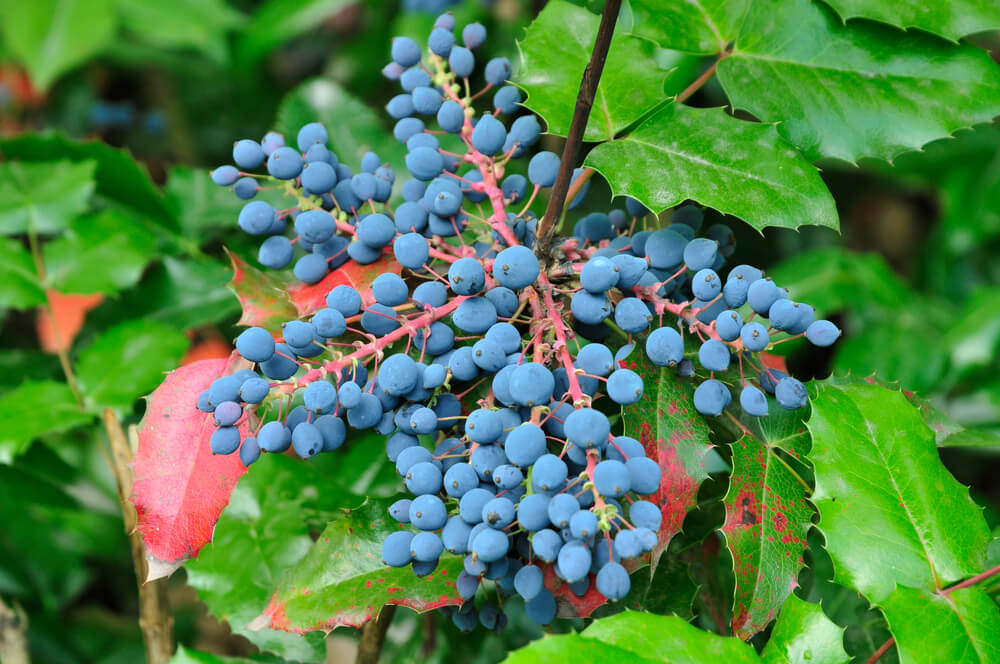
This less-known herb was named the ‘State Flower’ of Oregon, hence the name, Oregon grape. A widely propagated myth is that it is not actually a grape. It is an evergreen shrub that primarily grows in North America.
Why does it work?
Oregon grape initially earned its medical status as a well-known antibiotic, however, after extensive research, it was found that it is an antifungal, antimicrobial, and antioxidant. It consists of berberine, the active chemical compound that is well known to kill several pathogens including candida.
In a pharmaceutical study (7)conducted, it was concluded that berberine present in this herb was able to kill candida yeast strains that have become resistant to antifungals such as fluconazole. Additionally, it was also found that in the presence of this chemical compound, the growth of candida strain was restricted, and it also destroyed the yeast cell by damaging the plasma membrane of the cell.
How to use?
Oregon Grape is available in many different formulations, including capsules, powders, tinctures, and teas. You could choose any of them that appeals to you. However, it is advised that you consult with your physician/doctor before you start using this regimen.
How much to use?
It is recommended that you start with a low dose like 2 cups a day. You could then increase the dosage as suited. However, before doing so, it is recommended that you consult with your physician whether you could adhere to this regimen.
CURE 4: Essential Oils for Yeast Infections
Wondering how essential oils will work for yeast infection? Read on ahead to know more. These oils are extracted from barks, flowers, stems, and other living parts of the plant and have a lot of beneficial effects for humans as they are able to help in the reduction of swelling and alleviating pain and also helps in fighting the pathogens that are present in the site of infection.
1. Tea Tree Oil
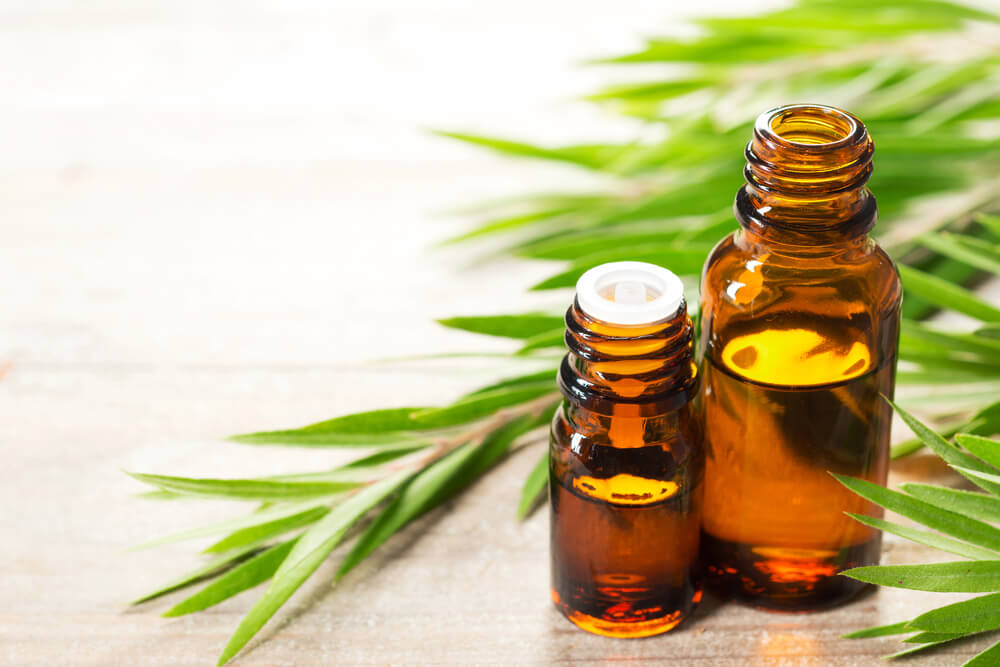
Tea tree oil is an ancient essential oil that is filled to the brim with antifungal and antibacterial properties. It’s been used for hundreds of years to help treat skin infections and heal skin wounds.
There are several women who have vouched for that vaginal tea tree oil suppositories as an alternative to over-the-counter medication and prescription yeast infection medications.
Why does it work?
Tea tree oil is a well known antifungal and antibacterial agent that is potent enough to fight a yeast infection.
A study conducted in 2003 examined tea tree oil’s efficacy to treat the common infectious strain that is Candida albicans, including 14 other drug-resistant strains. It was deduced that this oil was effective against all strains.
How to use tree oil for yeast infection?
It is essential that you understand that you could in no way consume any sort or kind of essential oil as it is dangerous. Essential oils are only for topical use.
Ingredients:
- ½ cup of water
- 3-4 drops tea tree essential oil
- Cotton Pad
Procedure:
- In a bowl add 1/2 a cup of water and add 4-5 drops of the oil to it.
- Now soak the cotton pad and squeeze it. Now apply it to the affected area.
- Let it rest overnight and wash with lukewarm water in the morning whilst gently rubbing it.
How much to use tea tree oil for yeast infection?
You could do this twice a week for instant and effective results.
2. Oil of Oregano
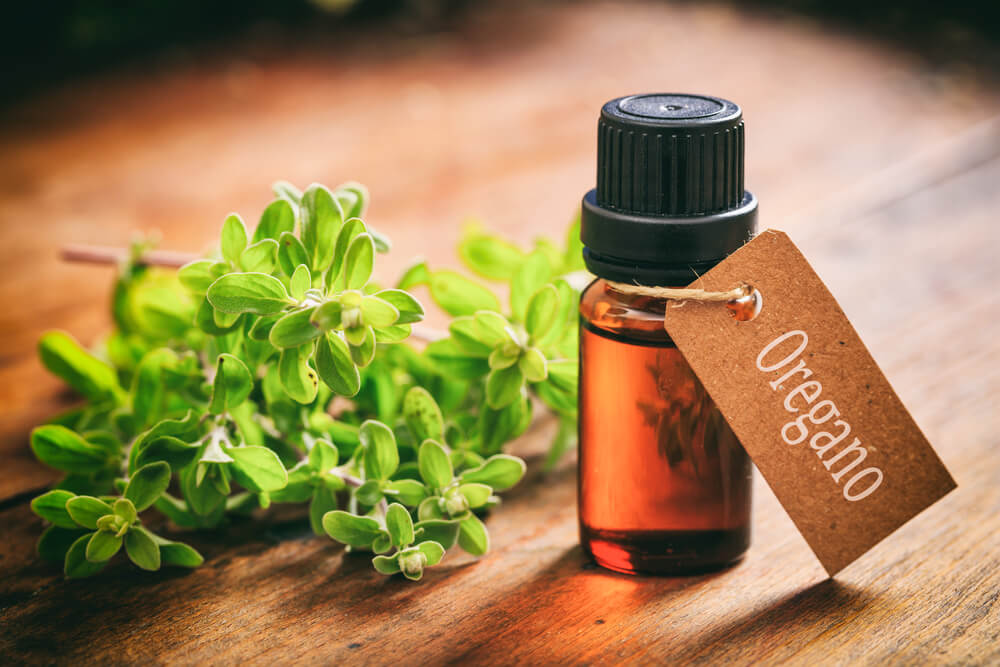
Oregano oil is made using the common oregano, Origanum marjoram, which has no special properties. However, oil of oregano made from the wild oregano, Origanum vulgare, consists of two very potent antifungals: thymol and carvacrol.
Why does it work?
Oregano oil has potent antifungal properties owing to the fact that there are active constituents such as thymol and carvacrol. These active compounds act on the growing candida and inhibit their growth, thereby preventing the further spread of the infection.
In a research conducted, it was deduced that oregano oil was effectively able to stop the growth of candida strain, however, this was conducted in an isolated petri dish. There still is a need for conducting these experiments on human subjects.
How to use oregano oil for yeast infection?
It is essential that you understand that you could in no way consume any sort or kind of essential oil as it is dangerous. Essential oils are only for topical use.
Ingredients:
- ½ cup of water
- 3-4 drops tea tree essential oil
- Cotton Pad
Procedure:
- In a bowl add 1/2 a cup of water and to it add 4-5 drops of the oil.
- Now soak the cotton pad, squeeze it and then apply it to the affected area.
- Let it rest overnight and wash with lukewarm water in the morning whilst gently rubbing it.
- Additionally, for better results, you could pour 3-4 drops of the oil onto a tampon and you could insert it. However, it is recommended that you change it every 2-4 hours. It is also advised to not leave a medicated tampon in for more than 6 hours.
How much to use?
You could do this procedure for a week and then check back with your doctor for the assessment of your condition and then move further with the advice of your doctor.
3. Thyme Essential Oil
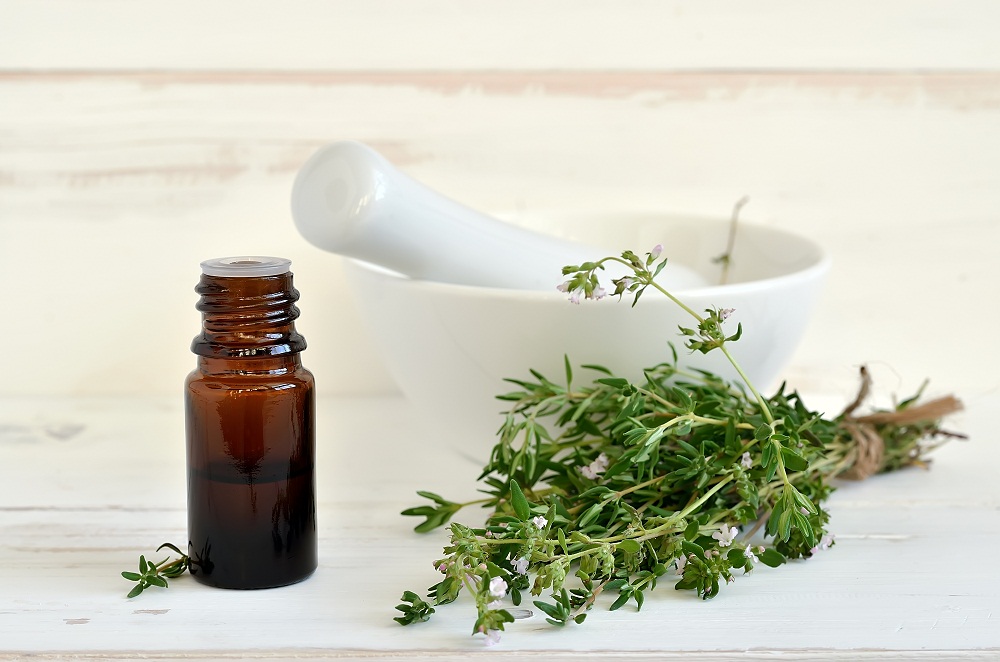
Thyme oil is one of the strongest antioxidants known, and it has been used as a medicinal herb since ancient times. It is a well-known antiseptic, antibacterial, antifungal, and also has calming properties and is considered as one of the fastest acting remedies for yeast infections.
Why does it work?
In a research conducted in 2014, it was deduced that thyme oil was able to make enzymatic changes to the fungus that was growing and it was able to inhibit the growth of candida. Thyme essential oil is an antifungal oil that helps in preventing the growth of candida strain.
How to use Thyme Oil for yeast infection?
It is essential that you understand that you could in no way consume any sort or kind of essential oil as it is dangerous. Essential oils are only for topical use.
Ingredients:
- ½ cup of water
- 3-4 drops thyme essential oil
- Cotton Pad
Procedure:
- In a bowl add 1/2 a cup of water and add 4-5 drops of the oil to it.
- Now soak the cotton pad, squeeze it and then apply it to the affected area.
- Let it rest overnight and wash with lukewarm water in the morning whilst gently rubbing it.
Additionally, for better results, you could pour 3-4 drops of the oil onto a tampon and you could insert it. However, it is recommended that you change it every 2-4 hours. It is also advised to not leave a medicated tampon in for more than 6 hours.
How much to use?
You could do this procedure for a week and then check with your doctor for the assessment of your condition and then move further with the advice of your doctor.
CURE 5: Supplements
Supplements form the adjuvant therapy, i.e, you follow this treatment alongside the primary treatment. Supplements form the backbone for your recovery as lacking nutrients and minerals could lead to weakened immunity and making your body prone to infection from pathogens.
1. Caprylic Acid
Coconut oil is touted to be the one- stop solution to everything. It is a well-known fact that bears several medical benefits. Many of these benefits stem from caprylic acid that is present in coconut oil.
Why does it work?
Candida infections are caused by fungus. The antifungal properties of caprylic acid are thought to kill and prevent the growth of the fungus. In a 2011 study (8),it was found that caprylic acid was effective in treating candida infections. It is believed that caprylic acid is so effective because it can break down the plasma membranes of candida cells.
How to use?
Caprylic acid supplementation is very simple and could be followed by just using them right from the container. Although it is strictly advised that you check with your doctor/physician before you do so.
How much to use?
Ideally, it is recommended that you stick to the dosage available on the container. However, before doing so it is recommended that you consult with your physician if you could adhere to this regimen.
2. Hydrogen Peroxide

A simple chemical compound that consists of hydrogen and oxygen could go a long way in helping you treat your yeast infection. Hydrogen peroxide is used as a disinfectant in the medical field.
Why does it work?
The vagina normally has good bacteria that produce hydrogen peroxide that controls the growth of candida. However, when there is an imbalance in this bacteria, that is when candida strikes. Hydrogen peroxide is an unstable compound, hence it has the ability to break down into hydrogen and oxygen when it is applied and the oxygen helps in eliminating the infection. It is considered to be one of the most reliable treatments for any fungal infection.
How to use hydrogen peroxide for yeast infection?
It is to be noted that this is not a standalone treatment and it should be paired with other home remedies/alternative treatments for best results. It is also to be noted that you should be using only 3% solution of hydrogen peroxide as that is clearly for topical use.
First, you would need to take 1 teaspoon of hydrogen peroxide and add it to a glass of water. Stir it well. It is to be noted that you don’t use excessive peroxide as it could cause an inflammation in the area. Once you have the solution, pour it carefully onto the affected area. For better results, you could also soak your body in a bath which has hydrogen peroxide. It is to be noted that hydrogen peroxide cannot be consumed and that it is only for topical application.
How much to use?
Follow this procedure once or twice a week. It should be noted that it would only take a few weeks until you see the changes in your body.
Preventive Tips
- Yeast thrives in moist environments so make sure to keep the genital area dry at all times.
- Avoid wearing tight-fitting clothes and pantyhose for prolonged periods, especially if you know you’re going to sweat.
- Set aside the fancy lingerie for the bedroom and wear cotton underwear for regular use as cotton prevents moisture retention.
- We know you feel like you deserve to sit and do nothing after a tough workout, but you must immediately change out of the sweaty gym clothes. The same goes for wet swimwear.
- Not changing your tampon or pad often enough is essentially setting yourself up for a disaster. Although most brands claim their product is safe to use for 6-8 hours, it is recommended that you change every four hours, irrespective of the flow.
- Vaginal perfumes, sprays and lotions, and any other feminine hygiene products containing fragrance can irritate the area and cause an imbalance of bacteria and yeast. Avoid these products.
- Make sure to use a water-based, perfume-free lubricant during sex, and always shower immediately after.
- Yeast feeds on sugar, so cutting back on sugar consumption can help greatly.
- Never self-administer antibiotics and take them only when prescribed by a doctor.
Yeast Infection Vs. UTI: Know The Difference
Yeast Infection and Urinary Tract Infection, both affect your genital area but are two distinct conditions. To treat them effectively, it is essential to identify them. Here are some points that can help you know the type of infection.
- Yeast infection causes constant pain in the affected area while in the case of Urinary Tract Infection, you will experience pain and burning sensation while urinating.
- UTI may cause you to urinate more while that is not the case with Yeast Infection.
- UTI may cause pain in the lower abdomen region, back, and sides while yeast infection causes swelling in the genital area which is accompanied by pain.
These were some of the best home remedies for yeast infection. The itchy infection is indeed a reason to worry, but you can treat it effectively by using the treatments mentioned above.
These help in curing the yeast infection and prevent it from spreading further. The infection may occur on any part of your body; hence you must maintain proper hygiene and a healthy diet. Little changes can significantly help in preventing it.

